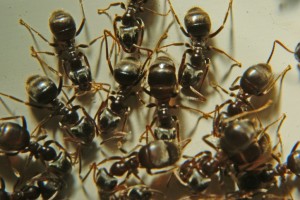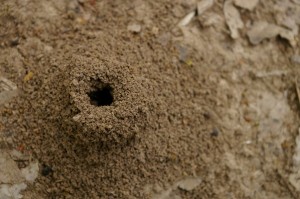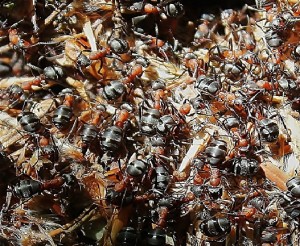
By: Matthew Campbell
Spring is a wonderful season – migratory birds return from their southern homes, leaves and flowers bloom, we have more hours of sunlight and warmth. Unfortunately, bugs come back too.
Ants are active now and invading peoples’ homes. Before you call a pest management company to take care of them, you should know that we don’t want to just put a band-aid on your pest problems. We want to provide a long-term solution. That’s what pest management means. There is no magical wand that we can wave to get rid of your pests once and for all. It requires proactive monitoring and preventative treatments. This is true for ants and dozens of other common household pests.

Why You See Ants Inside
Ants don’t die at the end of the fall – they hibernate in their nests all winter long until spring. Many ants die over the winter, but most will live to help the colony get back on its feet. March and April are the months when ants begin to come out, but because it’s still cold outside, many ants invade warm homes in search of food and water.
Now that it’s later in the season, you can’t ignore the possibility of ants nesting in your home. Pavement ants are known to nest under slabs and in cracks around the foundation. Carpenter ants are the second most structurally destructive pests, just below termites. They set up satellite nests around a reliable food source, which means if there is one nest in or around your home, there are dozens more nearby. When dealing with carpenter ants, ignoring them or treating them yourself could be an expensive mistake.
3 Reasons Why One Treatment Won’t Work
- Short Pesticide Life-Span
- Store-bought and commercially used pesticides for homes have a short residual life, meaning they break down and become ineffective in a short amount of time (1-2 months depending on weather). Once the material breaks down, your home is open for ants and other pests. One treatment will knock down an ant population, but queens constantly lay eggs, and the population will rebound in no time.
- Pheromone Trails:
- When a worker ant finds a source of food or water, that ant will return to the nest and leave a pheromone trail behind that tells the other workers where to go. These pheromone trails last much longer (up to a year) than any residual pesticide you or a professional will apply around your home. Once the pesticide breaks down, ants can follow these trails back into your home unharmed.
- Cryptic Nests:
- It’s not always easy for a pest management professional to find ant nests. Carpenter ants sometimes give us clues (piles of sawdust), but this is only if we’re lucky. If there are one or more ant nests inside your home, then a single treatment may help with one nest, but have little or no effect on a nest on the other side of your home.

Keeping Ants Out
A recurring service, along with proper sanitation and yard maintenance, is the best way to keep ants and other pests from becoming a nuisance or destroying your home. With regular visits, pest management pros can monitor pest activity, give you expert advice to prevent future infestations, and actually save you money in the long run from unsuccessful DIY treatments and pest damage.
A single treatment only offers immediate gratification. If you want a long-term solution against ants and other pests, regular visits with preventative treatments is your best option.
Every season brings a new threat from pests. Be prepared. Modern Pest Services offers a HomeCare Green Program for year-round pest protection, as well as Wildlife, Termite, Mosquito, Tick, and Bed Bug Control Services. 1-800-323-7378.
